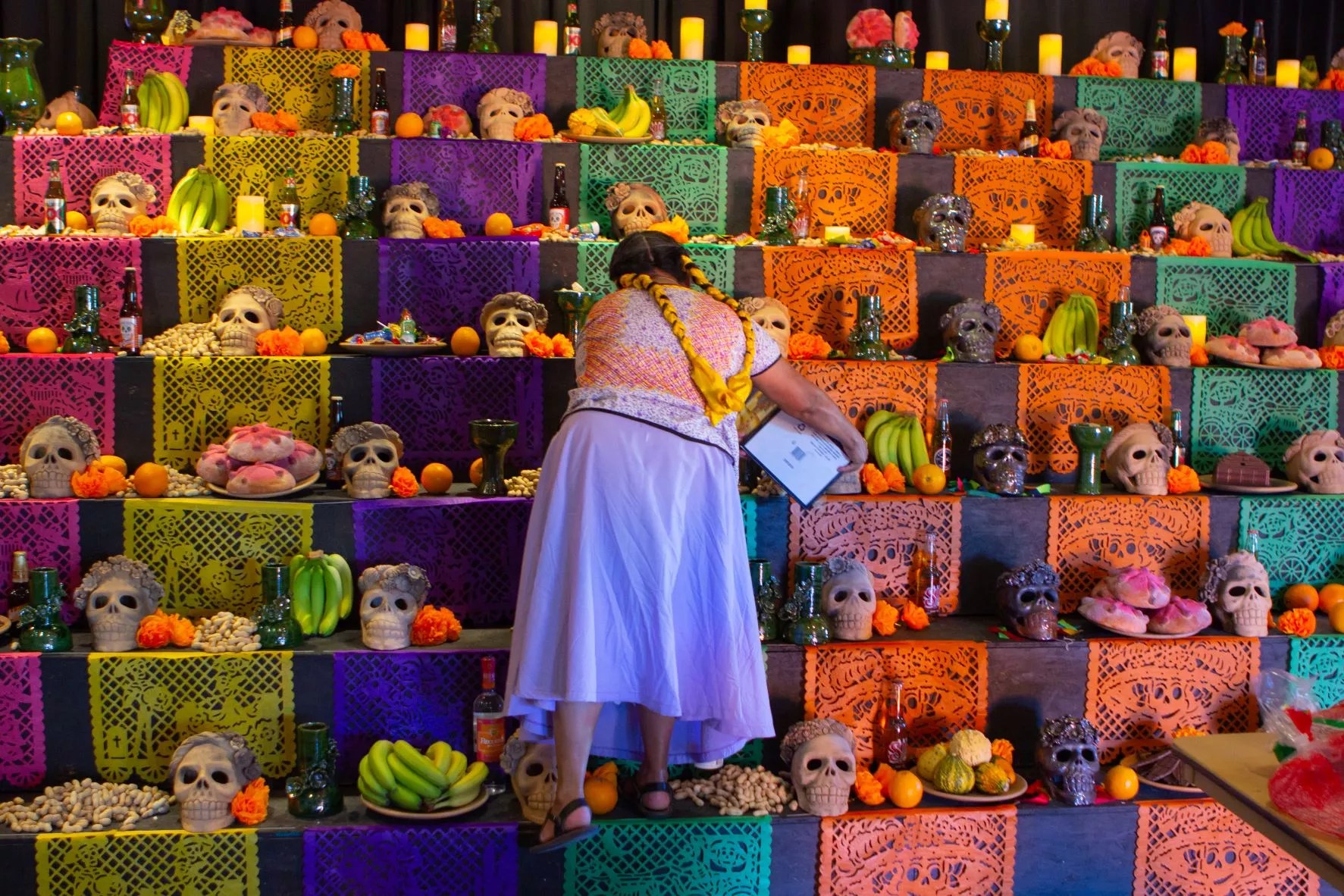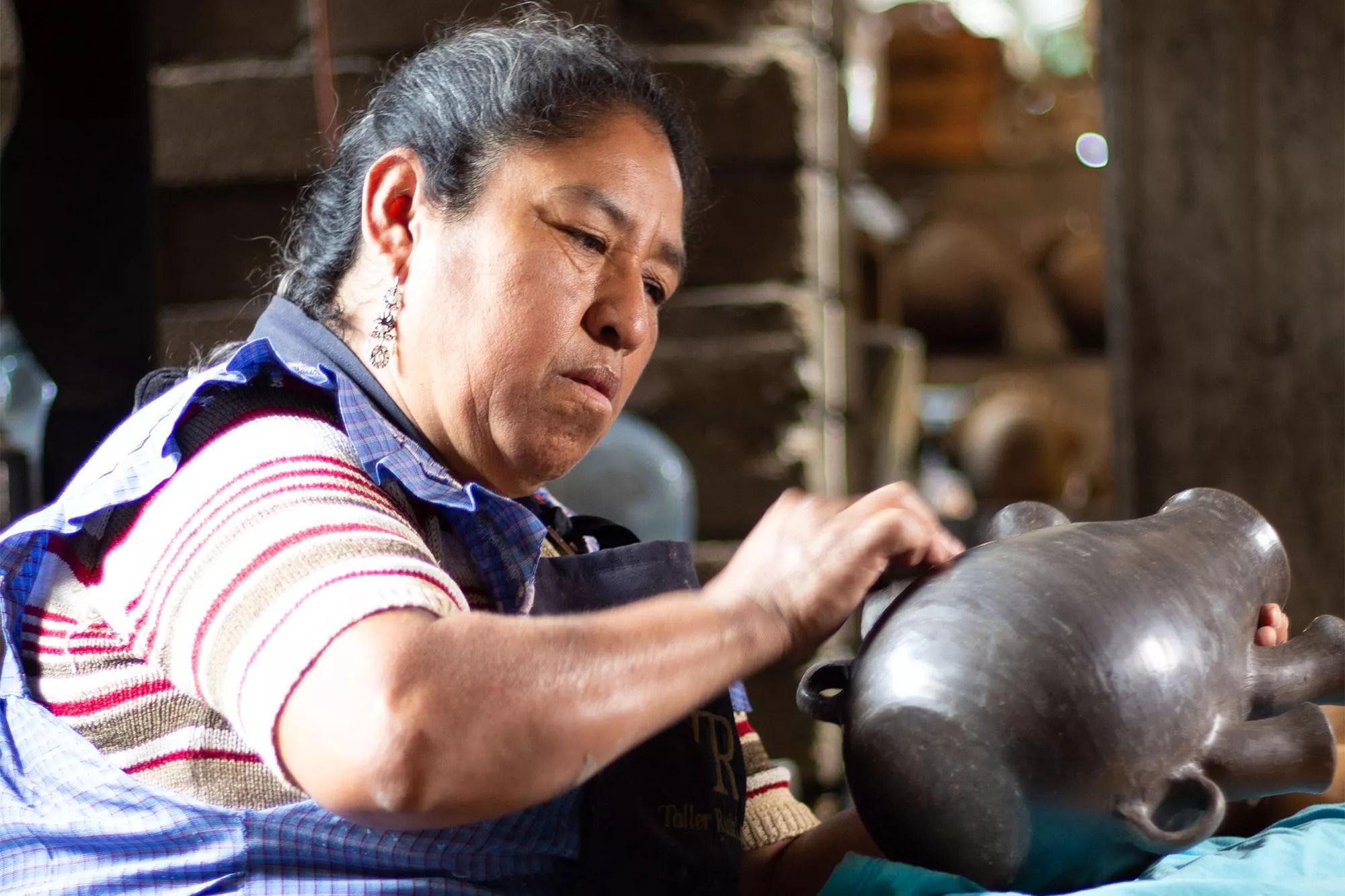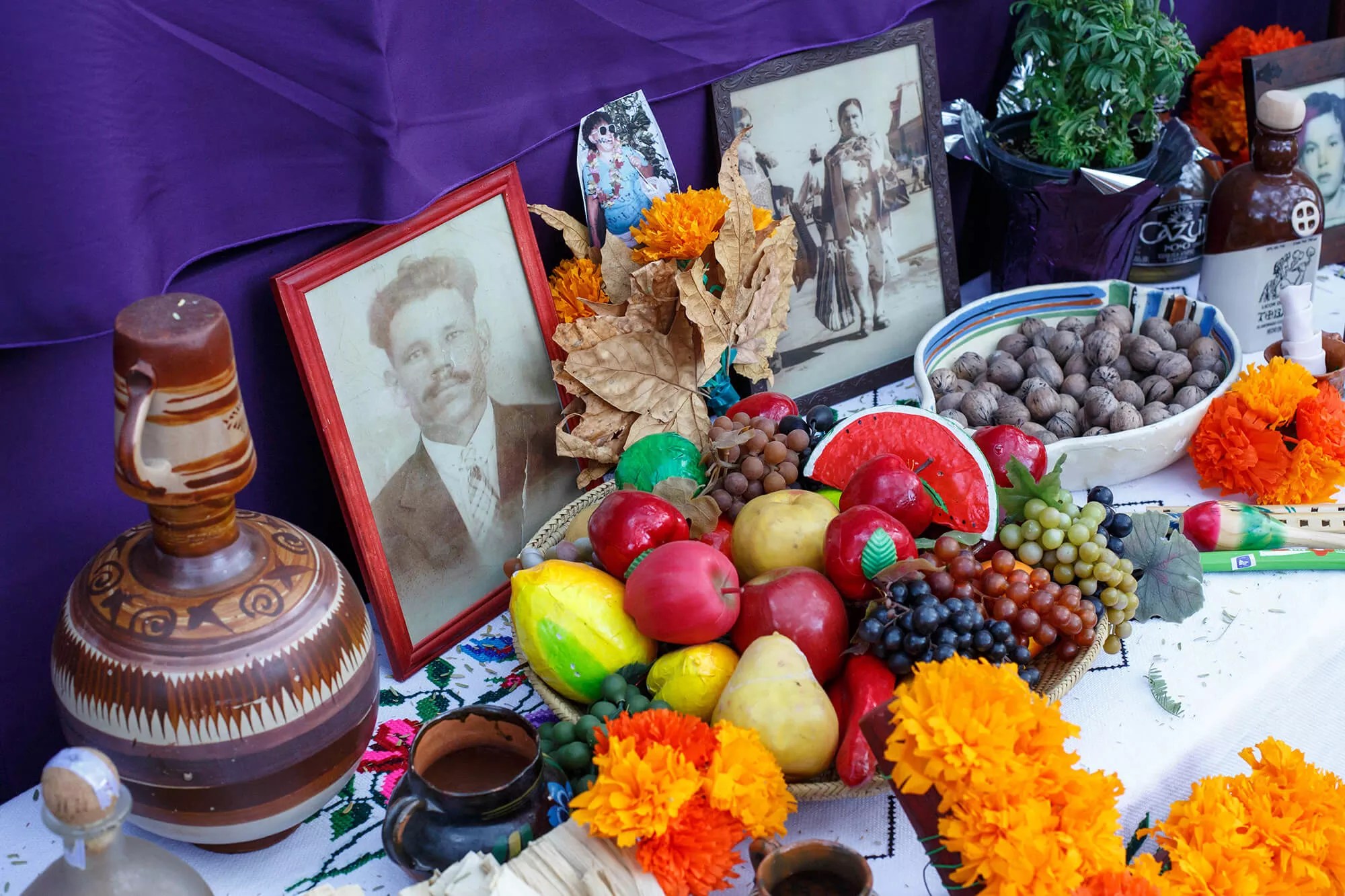
Desert Botanical Garden

Audio By Carbonatix
The annual Día de Muertos celebration at the Desert Botanical Garden on October 29-30 will offer an immersive experience into the specific culture and traditions of how the holiday is celebrated in and near Oaxaca, Mexico, thanks in large part to the participation of Indigenous artist Rufina Ruíz López. The event promises to be bigger than ever after a two-year hiatus due to the pandemic.
Ruíz López is a fifth-generation master ceramicist who formed 200 handmade clay skulls at her family’s workshop, Taller Ruíz López, for placement throughout the Garden. She also created elements for a giant welcome arch, including thousands of paper flowers.
And, she’s constructing a 30-foot-wide community mega altar – the likes of which have never been seen at the garden – inside the Webster Auditorium. It features seven levels to represent the seven cardinal sins, and there are different offerings on each level. For instance, her mother liked watermelon, so that’s included, along with sugar cane, bananas, tomatoes, and many other food-based offerings.
The altar also includes several hundred linear feet of papel picado, bright paper with cutout designs that are said to rustle when the souls of the dead arrive.
Will you step up to support New Times this year?
At New Times, we’re small and scrappy — and we make the most of every dollar from our supporters. Right now, we’re $17,250 away from reaching our December 31 goal of $30,000. If you’ve ever learned something new, stayed informed, or felt more connected because of New Times, now’s the time to give back.
“All of these things have traditional meaning and symbology,” says Laura Spalding Best, senior director of exhibits for the garden. “It’s going to be a beautiful, saturated installation.”
This year, the Garden refers to the holiday as Día de Muertos (Day of Dead), instead of how it’s usually seen, as Día de los Muertos (Day of the Dead). “We made the switch because this is how everybody refers to it in Oaxaca,” Best notes. “We dropped the ‘los’ in favor of that authenticity to the holiday. It’s been a change for us, too.”

Master ceramicist Rufina Ru
Rufina Ru
Día de Muertos has its roots in pre-Colombian Mesoamerica and weaves in Spanish culture and religion. It’s a way for people to honor those they’ve lost and welcome their souls back briefly for a reunion that includes their favorite food, drinks, and other items they enjoyed while alive. These are placed at an altar, often located at gravesites or in their homes.
“I think it’s a naturally appealing tradition,” Best says. “Anyone who’s lost a loved one, to think that on these days there’s this real connection where the dead are invited back home. You’re providing their favorite foods and telling stories about them. There’s a good deal of humor in this holiday that I don’t think I ever appreciated before.”
Although Día de Muertos is traditionally observed on November 1 and 2, most of the activities at the Garden will take place from noon to 8 p.m. Saturday, October 29, and noon to 6 p.m. Sunday, October 30. Guests can make paper flowers, decorate sugar skulls, and get their faces painted; vendors will sell their wares in the mercado; various dance companies and musicians will perform throughout the day; and from 9 a.m. to 1 p.m. Saturday, masters of alebrejes art (tiny, colorful figurines) will lead a hands-on workshop.
“Everybody will have a really exciting piece at the end of it,” Best says of the alebrejes workshop.
Each day will culminate in a procession starting at Ullman Terrace that winds through the trails. It’ll end at Sunset Plaza, where people can write memories of their loved ones and hang them on the “Tree of Life.”
During the procession, attendees will be treated to pop-up performances talking about the true meanings of Día de Muertos. “I can’t give everything away,” Best notes, “but we will have a lot of people in costume performing and acting out traditional Mexican folklore and stories.”

An important component of D
Desert Botanical Garden
People also are invited to participate in the mega altar. Best says they can print photos of their loved ones from their phone right on-site and leave them. They’ll also learn about the symbology of the altar, including the flowers, candles, copal, pan de muerto, and more.
Best says the Garden connected with Ruíz López via a contact with the Mexican consulate, which introduced them to a curator who’s originally from Oaxaca. Ruíz López is a celebrated artist and teacher who studied at the Centro de Artes de San Agustín and has been featured in magazines such as Vogue and Architectural Digest.
“Her ceramics are really unparalleled,” Best remarks.
It was meaningful to Ruíz López and her family to be part of the celebration in a garden setting, she says, because we are all part of Mother Earth and it offers a tribute to her.
“Personally, for me, the Earth is a virginal womb that everyone desecrates,” Ruíz López says. “But in the end, no one respects her, right? And in this way, well, with this great offering inside the garden and on the ground, well, we are honoring her.”
The skulls that Ruíz López brought to the garden are made from five types of clay sourced from the hills near her town, and her mother passed down the trade and techniques of working with it. Ruíz López says it’s important that an artist’s mind, soul, and heart are connected when creating art, along with their hands. However, fire is extremely important as well, because “without fire, the pieces would not remain very solid.”
Also, Ruíz López’s nephew, Jose Hilario Ruíz Lopéz, is doing an installation of sand painting in front of the mega altar. Best says Rufina Ruíz López “represents the tradition and passing down her legacy to the people of her region and her family.”
Best adds, “Even though these are very traditional celebrations and the act of making the altar is part of the tradition, of course, these are contemporary working artists who are combining their craftsmanship and skills with a modern outlook.”